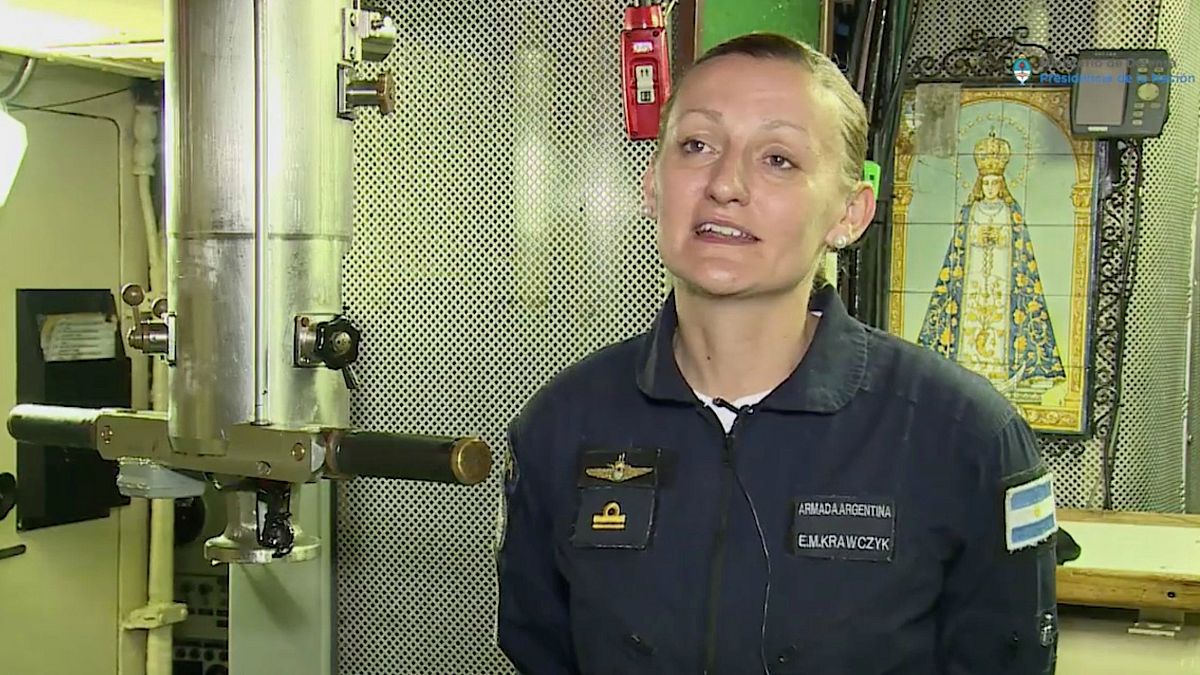The ARA San Juan disappeared last Wednesday with 44 crew members on board. What kind of ship is it? Where did it disappear? How long can the crew survive?
Efforts to locate a missing Argentine submarine have been stepped up with a multinational search team of boats and planes working to find the sunken sub and its 44 crew members in the South Atlantic.
As the search efforts continue amid growing fears for the fate of the crew, here is what we know so far:
What type of vessel is the ARA San Juan?
The diesel-electric TR-1700 was manufactured in Germany in 1983 making it the newest of the Argentine Navy’s three submarines.
Some 65 metres in length and seven metres wide, it can reach speeds of around 25 knots (45Km/h) underwater and 15 knots (27km/h) on the surface.
Under normal circumstances the sub can easily reach depths of more than 250 metres. Experts say, however, that the hull has been designed to withstand depths of around 500 to 600 metres.
If the vessel has sunk beyond this point the hull is likely to buckle under the pressure.
In 2008, the San Juan underwent a refit to extend its life for another three decades. That maintenance included the replacement of its four diesel engines and its electric propeller engines, according to specialist publication Jane’s Sentinel.
Última actualización de información sobre las operaciones de búsqueda y rescate del #submarinoSanJuanhttps://t.co/7I9qS8vHHwpic.twitter.com/GMOdEXukF1
— Armada Argentina (@Armada_Arg) 19 novembre 2017
Where did it disappear?
The ill-fated warship was returning from a routine mission in Ushuaia, Patagonia, near the southern most tip of Latin America, to its base at Mar del Plata, which is about 400km south of Buenos Aires.
The vessel was navigating at a speed of five knots when it last made contact.
Actualización sobre operaciones de búsqueda y rescate del #submarinoARASanJuanpic.twitter.com/1Zu6VpjZrV
— Armada Argentina (@Armada_Arg) 19 novembre 2017
Who is taking part in the rescue operations?
More than a dozen boats and aircraft from Argentina, the United States, Britain, Chile and Brazil have joined the search effort. Authorities have mainly been scanning the sea from the sky, as storms have made it extremely difficult for boats.
The focus of the rescue is believed to be an ocean patch of about 300 km in diameter from the sub’s last known location.
#AYER estas eran las condiciones meteorológicas y el estado del mar en la zona de operaciones de búsqueda y rescate del #SubmarinoARASanJuan Fueron tomadas desde el destructor ARA “Sarandí” pic.twitter.com/F8nddnWTpJ
— Armada Argentina (@Armada_Arg) 20 novembre 2017
Submarines are specifically built to be difficult to find. A US Navy P-8A Poseidon aircraft, known as a submarine hunter, has therefore been deployed to take part in the mission to locate the ARA San Juan.
Imágenes de hoy por la mañana del sobrevuelo realizado por uno de los aviones B-200 de la #ArmadaArgentina en el marco del operativo de búsqueda y rescate del #SubmarinoARASanJuanpic.twitter.com/8GTb2W3gvl
— Armada Argentina (@Armada_Arg) 20 novembre 2017
Who are the crew and how long can they survive submerged?
Argentina’s Navy says 44 personnel are on board the ARA San Juan.
Among the crew is Argentina’s first female submarine officer, 35-year-old Eliana Maria Krawczyk, who joined the navy in 2004 and rose to become the master-at-arms aboard the ARA San Juan.
The country’s navy spokesman Enrique Balbi has said the crew have oxygen, food and water to survive several days.
Argentine naval expert Fernando Morales has also said that in normal conditions these ships are able to remain underwater for at least 90 days.
When was the last communication with the sub?
The last time contact was made with the missing submarine was on Friday, November 17.
On Saturday, 18 intermittent satellite communications were detected raising hopes that the crew were still alive. But two days later, navy officials ruled out that the signals could have originated from the vessel.
What could have gone wrong?
Gabriel Galeazzi, a naval commander, has said that the submarine had come up from the depths and reported an unspecified electrical malfunction before it disappeared nearly 300 miles off the coast.
While it still remains unclear what exactly caused the ARA San Juan’s to disappear experts say such a malfunction might result in the vessel’s engines and communication systems shutting down.
Some crew members’ relatives have also questioned authorities for letting the crew navigate on an aging submarine, highlighting the issue of dwindling resources in the armed forces.
Were there signs of trouble?
The Argentine navy said on Thursday (November 24) that a possible explosion had been detected on the vessel on November 15.
The “abnormal, singular, short, violent, non-nuclear event” was recorded in the south Atlantic by a nuclear test watchdog.
Navy spokesman Enrique Balbi told reporters that the sound was “consistent with an explosion.”
Is there still hope of a successful rescue operation?
Crew members’ relatives who had been waiting for news at the submarine’s base in the city of Mar del Plata started going home late on Thursday, while the navy vowed to keep searching.
“At this point, the truth is I have no hope that they will come back,” Maria Villareal, the mother of one of the missing crew members, told local television.
Itali Leguizamon, the wife of one of the missing crew members, also told reporters she believed the “logical conclusion” was that they had died.
